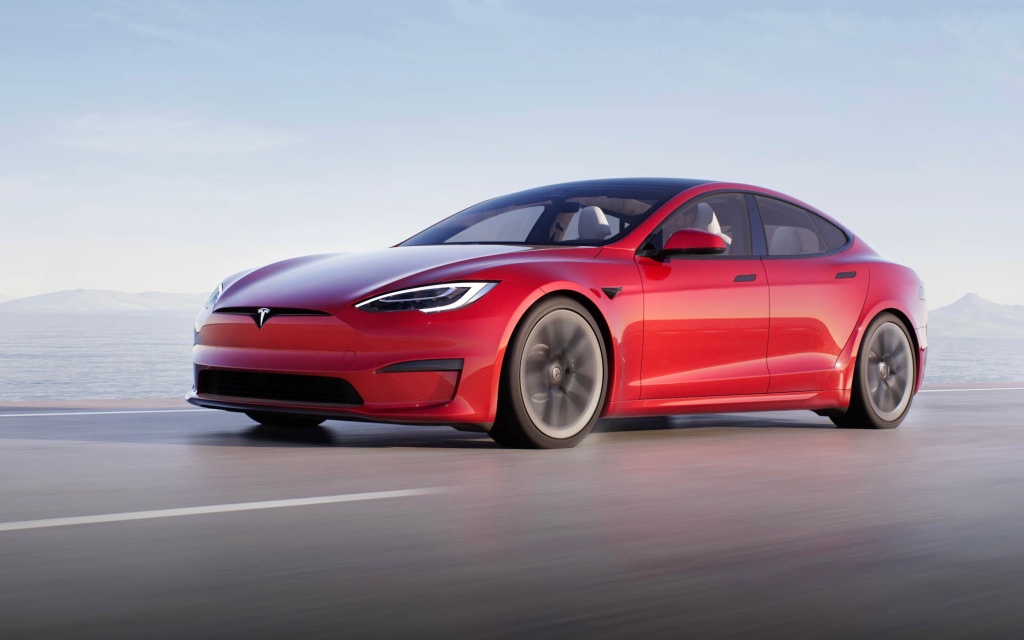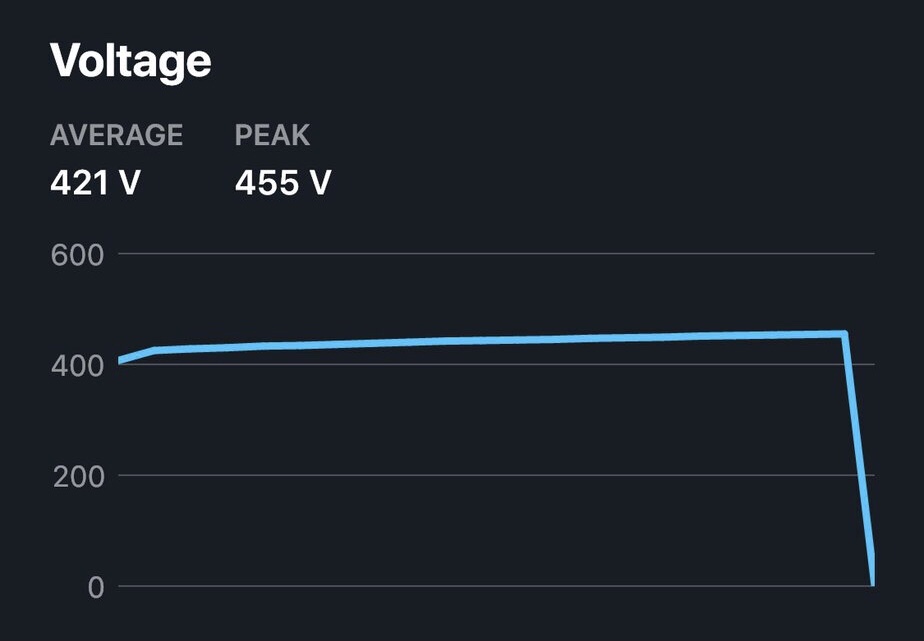
The sort of people who read the fine-print in the owner’s manual, and the specification nameplates on charging hardware cabinets, may wonder if the new Tesla Model S Plaid can fully charge at the large number of 150 kW version 2 Superchargers.
Yes they can.
Here’s why this is even an issue: the new Model S uses a battery pack with somewhat higher internal voltage levels than their previous cars. Tesla hasn’t yet provided the exact inner details on the new pack redesign but has stated that the new pack has a nominal (or midpoint) voltage of 450V or 25 percent higher than the 360V they used previously. A pack’s voltage level varies with its state of charge.

Okay, but what exactly does this have to do with using a V2 Supercharger?

It turns out that version 2 Superchargers were specified as having a DC output voltage range of 50V to 410V. That works fine when fully charging a Model 3 battery pack that has a nominal voltage of 360V which rises to around 400V when full. But for a new Model S Plaid with a nominal voltage of 450V? That shouldn’t work. Yet it does.
Most fully electric cars, like the earlier Teslas, have been designed to use 360V but some newer ones like the Audi e-tron and Jaguar I-PACE have packs with around a 400V nominal voltage. One advantage of using a higher voltage is that it lowers the current level flowing through the charging cables. High current causes the connector and cable to heat up at a time when Tesla and others are using liquid-cooled cables in order to push higher charging power rates.
A typical individual lithium ion battery cell has a nominal voltage of around 3.7V and cars with a nominal 360V pack thus have around 96 groups of cells wired together in series inside the pack (each cell group contains a bunch of cells wired in parallel at the same voltage). The redesigned Model S pack presumably has something closer to 120 cell groups wired in series.
Today, a Model 3 or Y can pull up to about 680A of current to charge at a peak of 250 kW. There is no evidence that existing V3 Superchargers can exceed this power today when charging a Model S Plaid but the company’s CEO, Elon Musk, has stated that increased charging power may be supported in the future at rates of “280, 300, 350 kW”. The new 450V pack may be one of the enablers for those higher future charging rates.
One of the first new Model S Plaid owners, Omar Sultan, provided graphs of his first V2 Supercharging session to ElectricRevs.

The above graph shows a Model S Plaid charging at the Rocklin, California V2 Supercharger site starting at 44 percent and ending at 80 percent. It charges just fine because the Supercharger was actually putting out a peak of up to 455V as the charging session was ended by the owner even though the charger had a stated peak voltage output limit of 410V.


It’s not yet clear if Tesla simply under-rated the charger’s true voltage output capability when they were originally installed, perhaps as a mis-direction to competitors, or if the V2 chargers have been silently upgraded after being installed.
Categories: Battery, Charging, Uncategorized
Leave a comment